
There are those who, like Mies van der Rohe, take architecture to have originated at the moment when two bricks were carefully laid beside each other. Others, like Louis Kahn, call for attention to the intimate aspirations of brick, in accordance with its modular nature. In the view of the critic Adolf Behne, these aspirations are of a social order on a symbolic plane, to the extent that the constructional logic of ceramic vaults seeks to express a collective will: it forms a set which meets the common objective of solidity when each unit finds its own place from which to contribute to an effort shared among equals. To those professing such tectonic beliefs, a visit to the Church of Christ the Worker, built by Eladio Dieste (1917-2000) in 1958-1961 near Atlántida, a seaside resort 45 kilometers from Montevideo, is inevitably and deeply disturbing. Not so much because of the atectonic, nearly textile quality of the roofs and undulating walls whose striped surfaces facilitate constructional legibility despite the hybrid nature of the reinforced ceramic. Especially disturbing are the numerous construction details executed with oblique cuts of brick, the brick’s modular nature unscrupulously violated, as well as the notorious penchant for executing the most diverse elements with the same ceramic material: floors, walls, and ceilings, but even balustrades, stair steps, and so on. Everything is brick, and with no cladding. Even the skylights are made of ceramic plant pots, turned into components for naïve bricolage. We can appreciate here a poetic of the popular which is neither accidental nor contemptible in Dieste’s oeuvre.

In articles, lectures, and project descriptions Dieste allowed no doubts about the priority he gave to the unit of space in the conception of the church. The floor plan shows a composition of heterogeneous fragments arranged along the nave. Besides the structure and the material quality, the penumbra is what gives unity to an isolated inner world. The little light that enters seeps in through small openings with fixed pieces of colored glass and translucent onyx that block out views of the exterior. Low lights on the facades, overhead lighting, and backlit compositions against the light carefully shine on the main liturgical spots and help create a mystical atmosphere that Dieste identified with the manifestation of the divine mysteries..
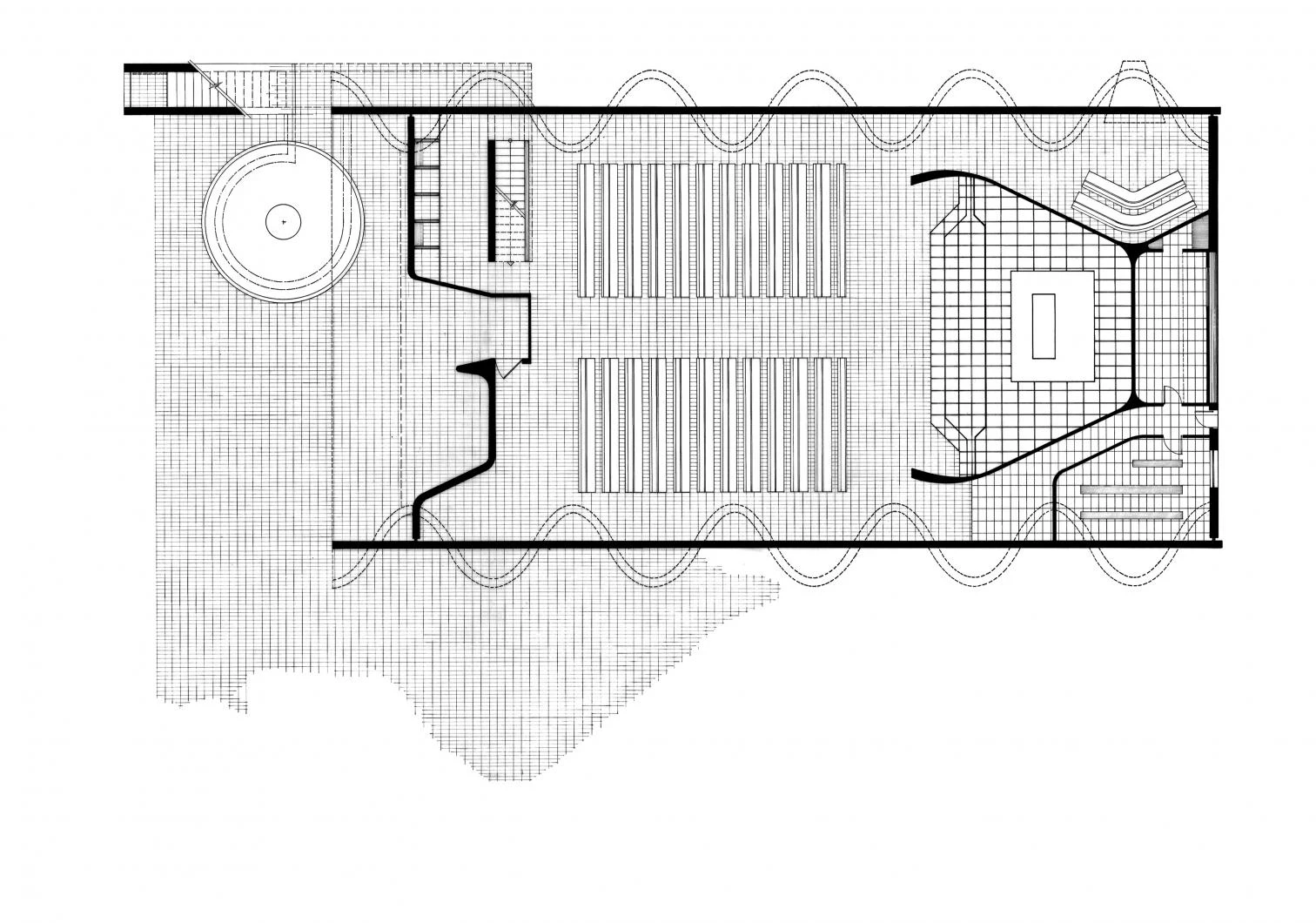
But the poetic atmosphere that seeks to transport the faithful into another world does not at all shut out the everyday. The nave was conceived as a serene place conducive to private meditation and worship, but also to joy and reverence in the face of death as a shared experience. Through this catholic sense of community Eladio Dieste wanted to build bridges with popular art and the “creative capacity of simple folk.” In his own words, the rustic and humble brick became an expression of the “true Christian spirit.”
A Catholic Builder
We have to be thankful to Mary Méndez for her recent book, Arquitectura y catolicismo en Uruguay, 1950-1960 (Montevideo, 2016), a first-ever in-depth study of the case of the Church of Christ the Worker from the angle of the social reach of its religious sense and the influence of Catholic reformism on its conception. Those who commissioned the work and the engineers themselves were all bound to Acción Católica, an organization made up of diverse professional associations, such as Christian agricultural syndicates and Catholic worker’s circles. Its initiatives developed in a country of anticlerical traditions and early secularization. Architects and engineers like Dieste contributed with their works to bringing people closer to the church hierarchy, preempting, through their conception of religious space, the directives that Vatican Council II would establish.
But Dieste’s religious convictions transcended conceptions of religious premises and concerned themselves with diverse dialogues between reality and mystery. So, for example, the spirit can come to the point of regarding the universe in the static equilibrium of structures that surpass gravity and take on forms that bind the beautiful to the divine. Also, the idea that Dieste took brick as a humble material brings us to his notion of a “cosmic economy” that seeks to agree with and sustain the profound order of the world: only he who builds with deep respect for the essence of materials can align himself with that profound order, and thus help generate true richness.

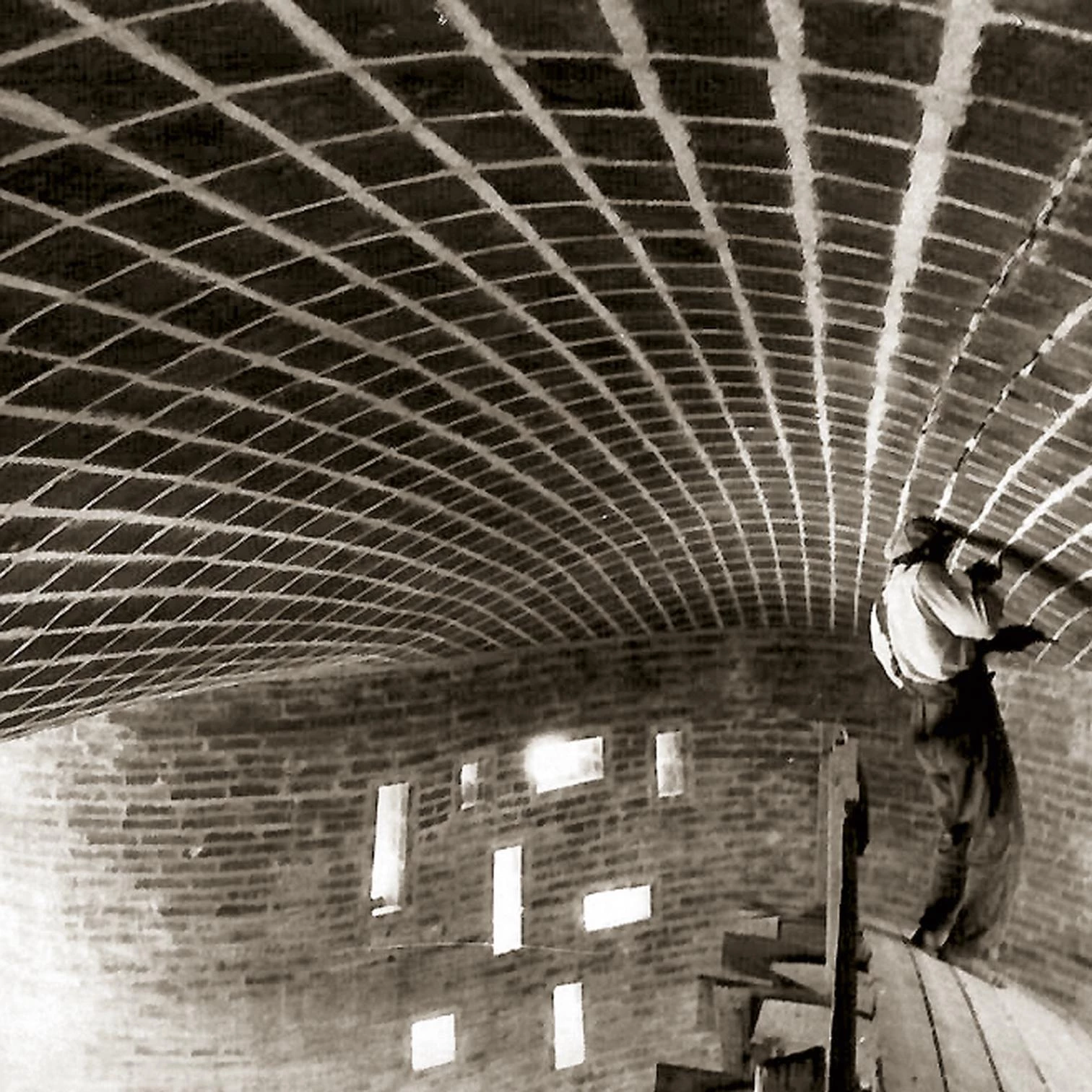
Such mysticism enabled him to link his interest in the artisanal values of popular art to his nature as an inventor of construction systems. His inventions were responses to mysterious intuitions that he himself described in the ecstatic terms of an enlightenment. Mario Sasson, the engineer in charge of structural calculation and construction management in Atlántida, confirmed that Dieste’s vaults were the result of lucid material-related intuitions that were subsequently verified through calculations. A first intuition was a fruit of collaboration with Antonio Bonet. Called in to execute some vaults of reinforced concrete for the Berlingieri House in 1947, Dieste criticized the irrationality of using that material and proposed a solution of sheets of brick.
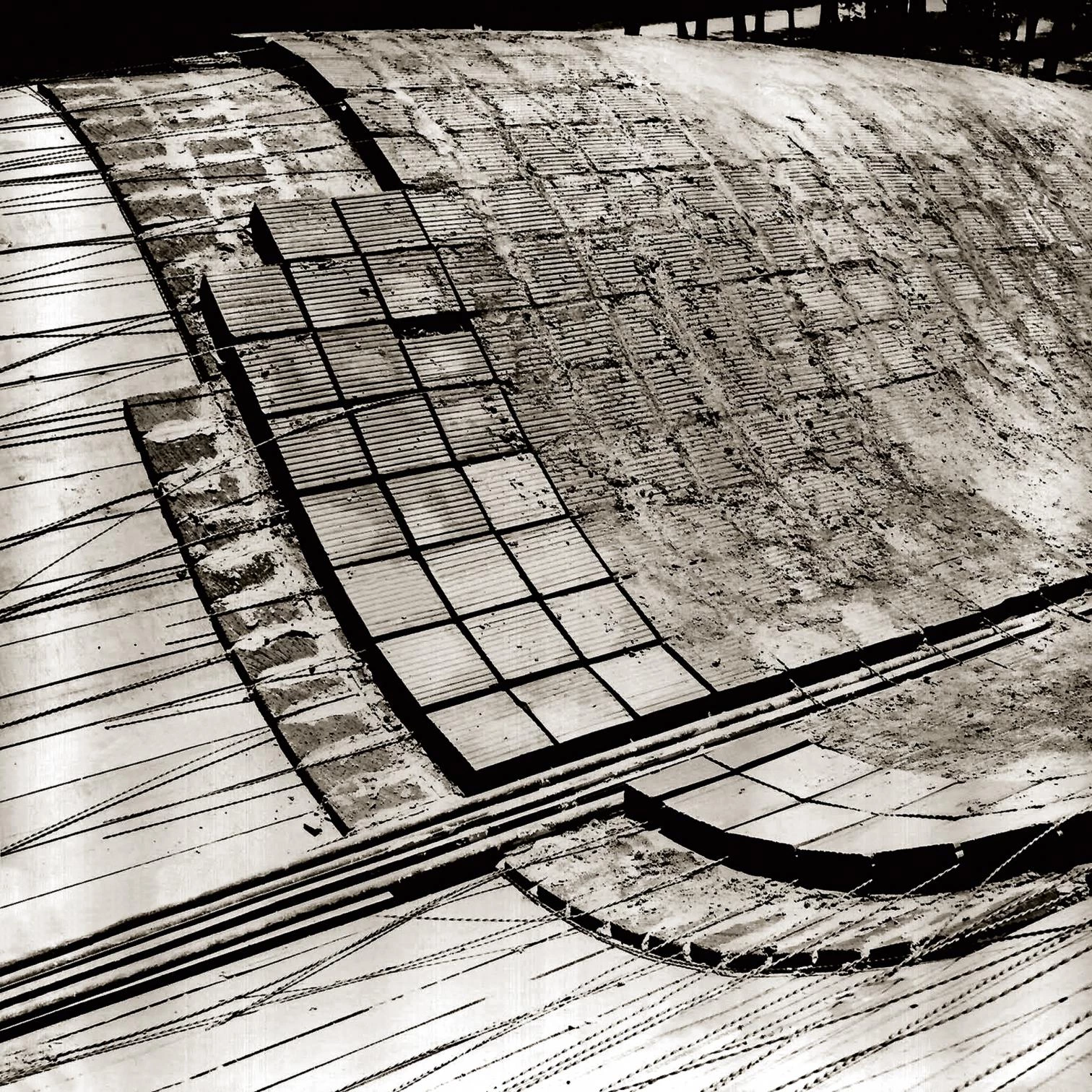
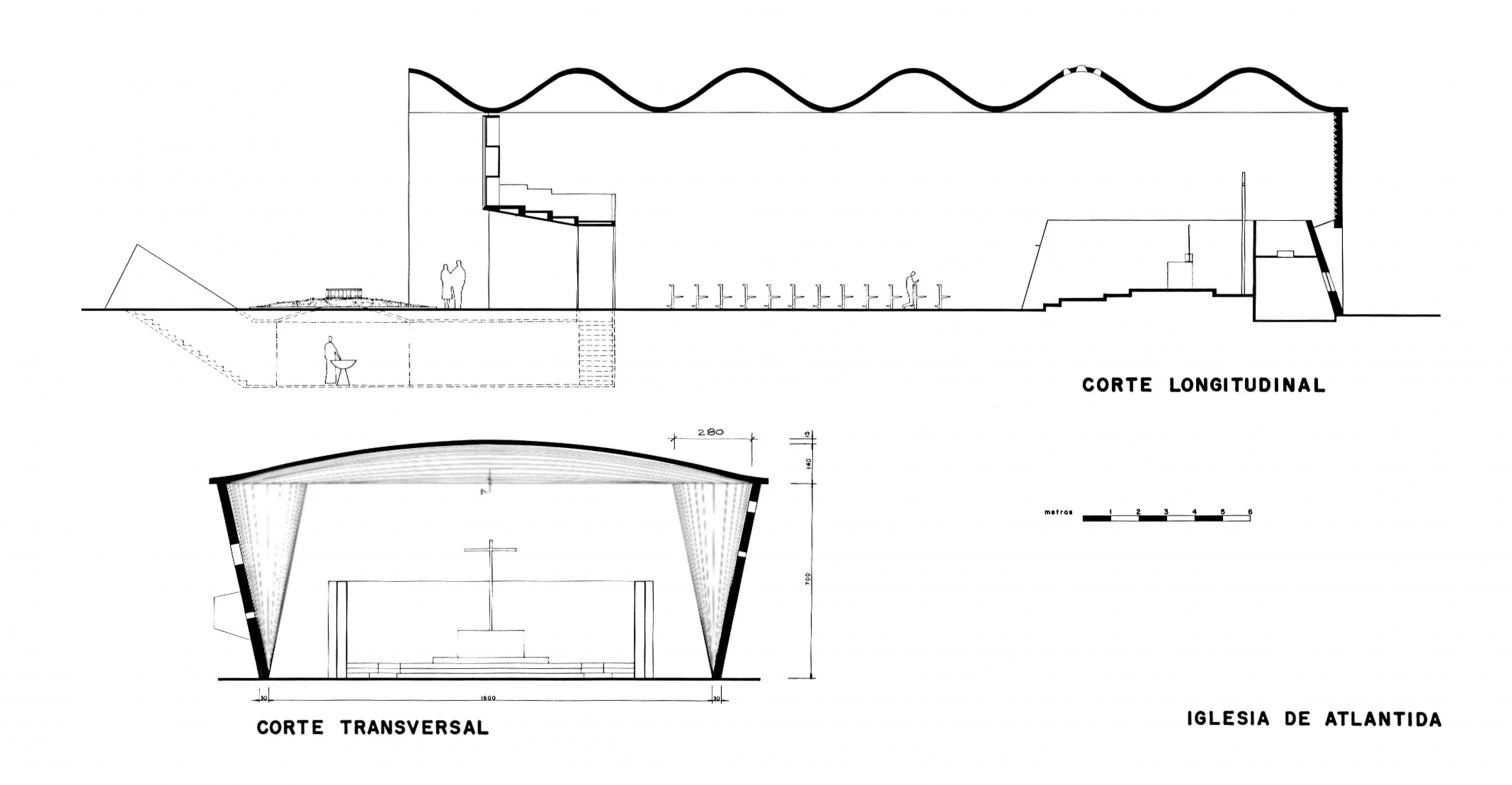
But not until the creation of the construction firm Dieste-Montañez in 1954 did ceramic vaults become the leitmotiv of his work. There are two variations: the Gaussian vaults and the self-supporting vaults, two basic types sharing a capacity to withstand the weight of the archaic ceramic material by means of thin sheets, thanks to the rigidity that gives them their form.
Known as the ‘Atlántida church,’ the Church of Christ the Worker near Montevideo was built with ceramic sheets rigidified by their shapes and made economical by the fact that they were easy to put up.
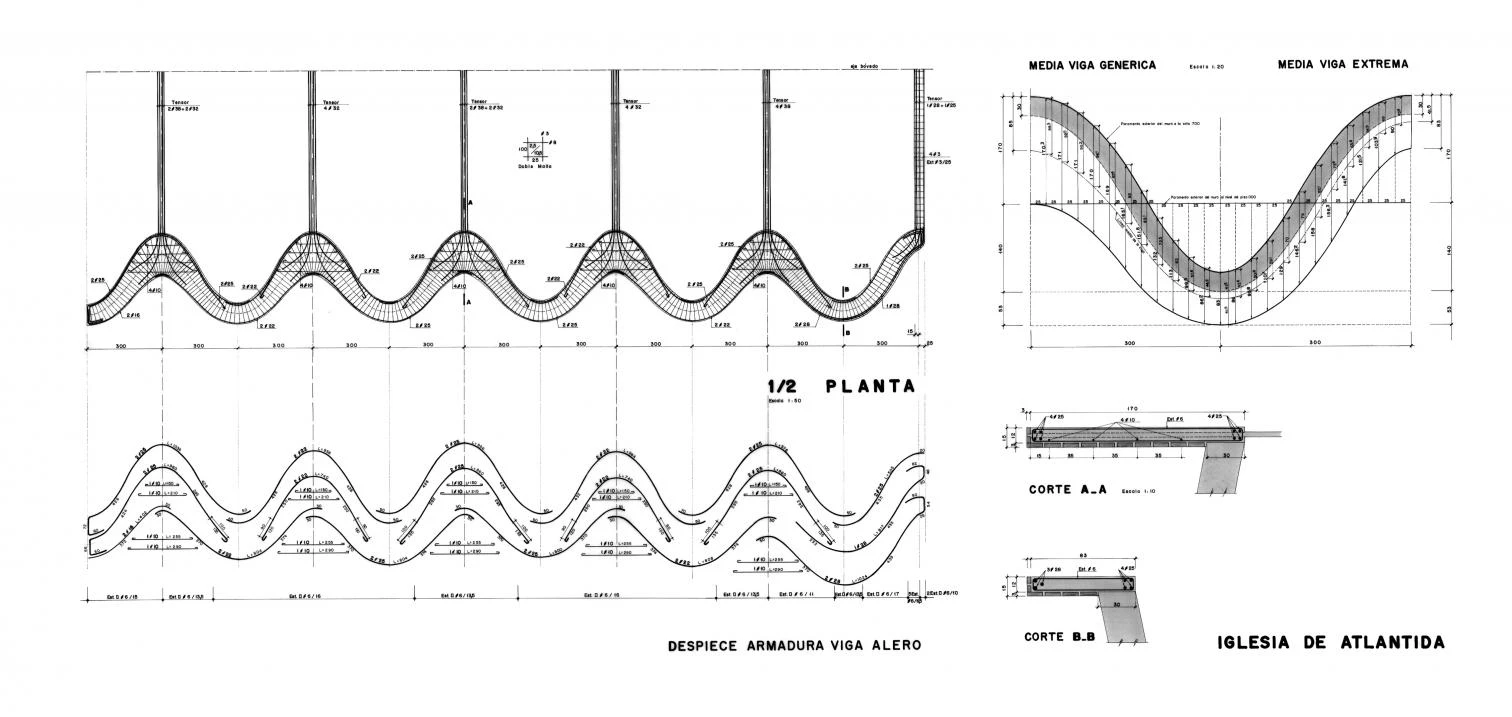
A Ceramic Atlántida
Building vaults was not part of local popular tradition, but artisanal use of brick was, and Dieste knew to reconcile it with industrial serial production. His vaults were economical because the artisanal process of positioning the molds, then placing the ceramic pieces over them, then putting wires in the joints, and then pouring the mortar could be done by workers of little skill. At this point, his creations were comparable with Félix Candela’s in Mexico, where the precision and slenderness of forms struck a contrast with the low technology of a kind of execution that was only feasible in an economic context of cheap labor.

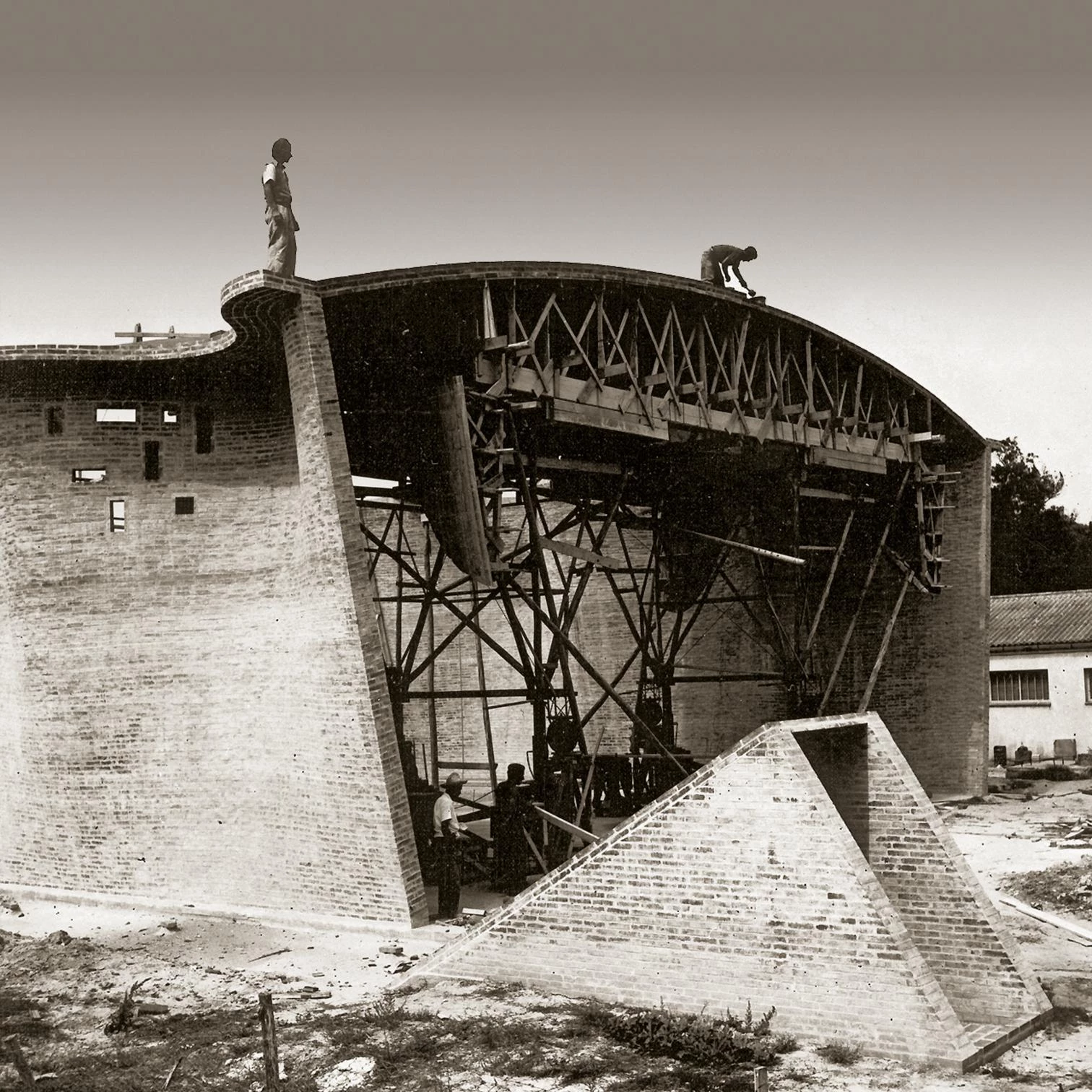
As Graciela Silvestri has pointed out, the company Dieste-Montañez would not have found a niche in an advanced industrial economy. Connecting Dieste’s Catholic fervor with collaborative practices between engineers and workers in factories and on building sites, Silvestri has situated Dieste in the Ruskinian tradition of a Christian work utopia. Dieste, that is, as a continuer of one of the main modern traditions. This interpretation contrasts with that which for decades was the predominant reading of Dieste’s work, which held him as one of the leading exponents of a critical appropriation of modernity in Latin America, attributing to him an attitude of resistance to hegemonic cultures.
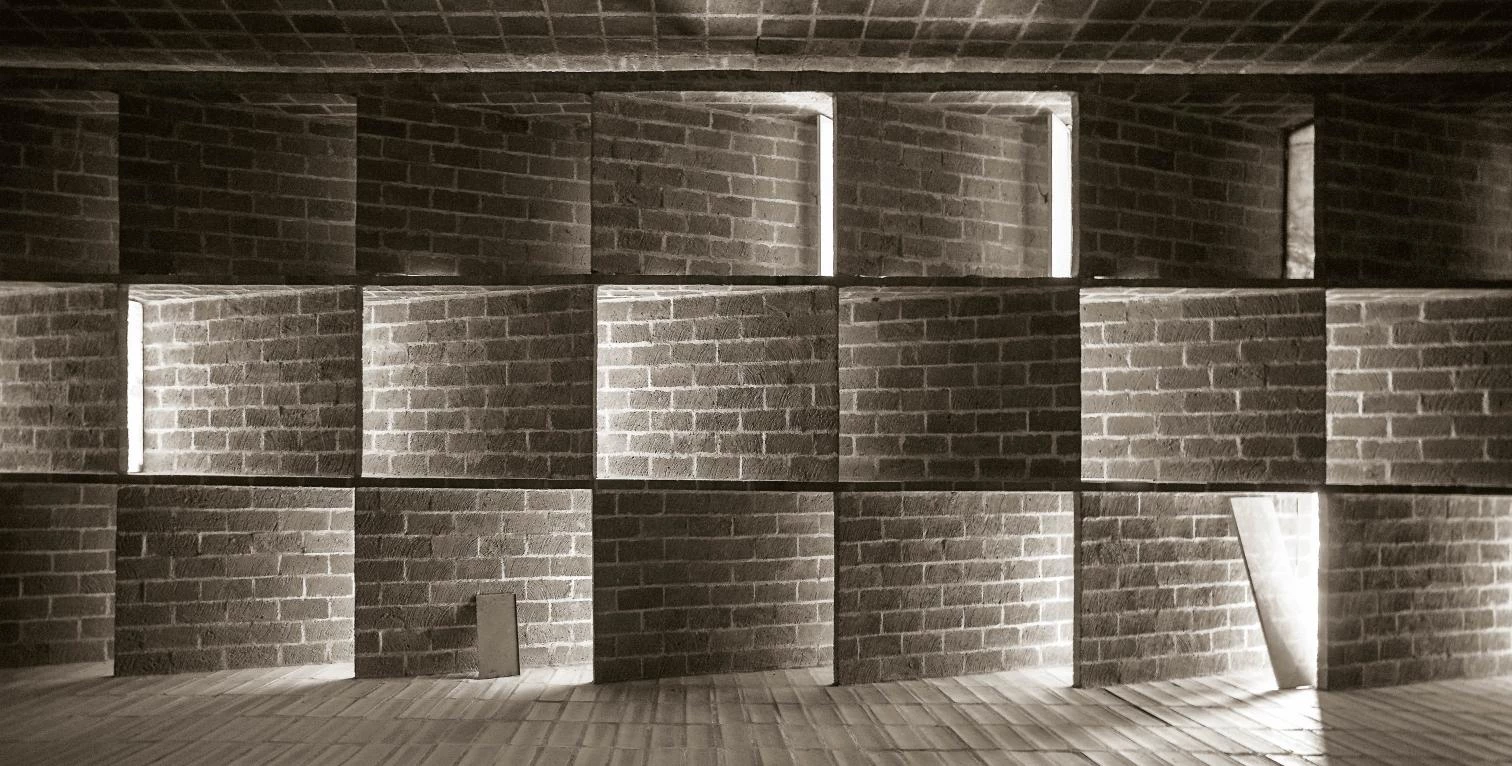
Colorful small glass panes, low lighting, and backlit compositions define the ceramic space of the church, the mystical atmosphere of which reflects the liturgical and symbolic preoccupations of Eladio Dieste.
Contradicting this view, it helps to recall the presence of industrial architecture of the River Plate region in the origins of modernity, specifically the object-of-worship status that the Bunge y Born grain elevator in Buenos Aires took on in the year 1913, when it was published in the yearbook of the Deutscher Werkbund association, whose commitment to the “spiritualization of work” came directly from the desire for transcedence and the work ethic of the Arts & Crafts movement. Walter Gropius, Le Corbusier, and so many other moderns saw this Buenos Aires silo as a perfect, patent example of the technical and aesthetic supremacy of American engineers, described by Reyner Banham as a “concrete Atlantis.” Although repeatedly assumed to be built with concrete, the material of the future, the monumental naked cylinders of the silo in Buenos Aires were actually made of reinforced brick, in accordance with the system established by the German engineer Ernst Stricker. In other words, the industrial constructions of reinforced ceramic in the River Plate area can hardly be seen as a form of resistance to the hegemonic cultures of modernity.
Far from responding to spontaneous creations, uncontaminated by foreign influences, it is now clear that Dieste drank from multiple fountains. Some of them respond to the local artistic tradition of Taller Torres García, the genealogy of which brings us back as much to Theo van Doesburg’s Concrete Art as to the cult of the popular in Catalan Noucentisme. The modern praise of popular Mediterranean architecture was present in Le Corbusier’s reinterpretation of Catalan vaults. Bonet was just one of his old collaborators who worked in Uruguay. There has been frequent mention of Spaniards in exile with a presence in the literary and artistic circles that Dieste was part of. The influence was patent in the case of the Christ of Atlántida, a work of the Madrid sculptor Eduardo Díaz Yepes, with whom Dieste shared the sense of cosmic emotion of space like a religious person yearning for total knowledge.
In the final analysis, on the centenary of his death, it seems fitting to uphold the cultural complexity of Eladio Dieste’s work and point out that his ultimate objective and purpose was transcendence.
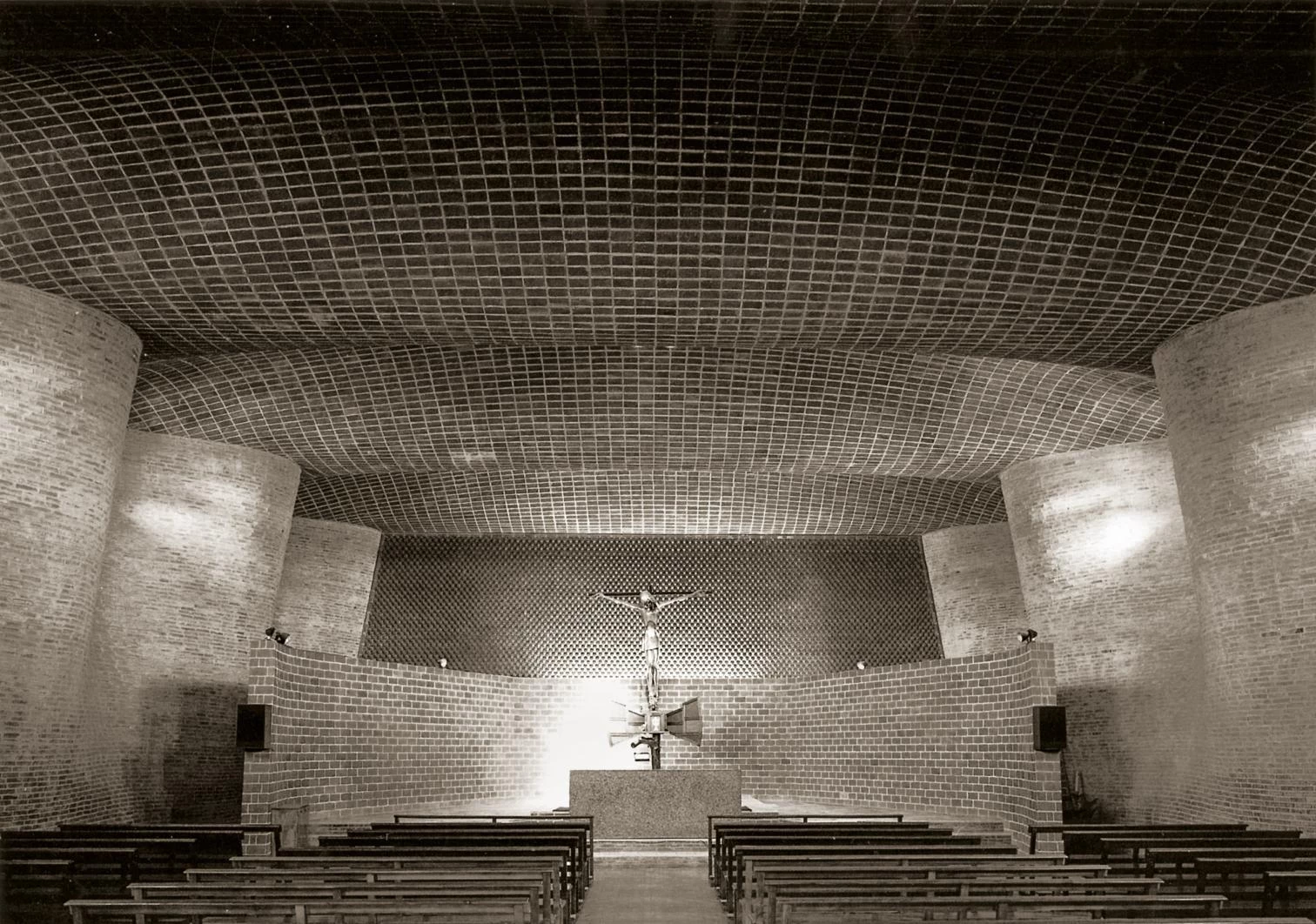
Joaquín Medina Warmburg has directed the Walter Gropius Chair at DAAD in Buenos Aires.





